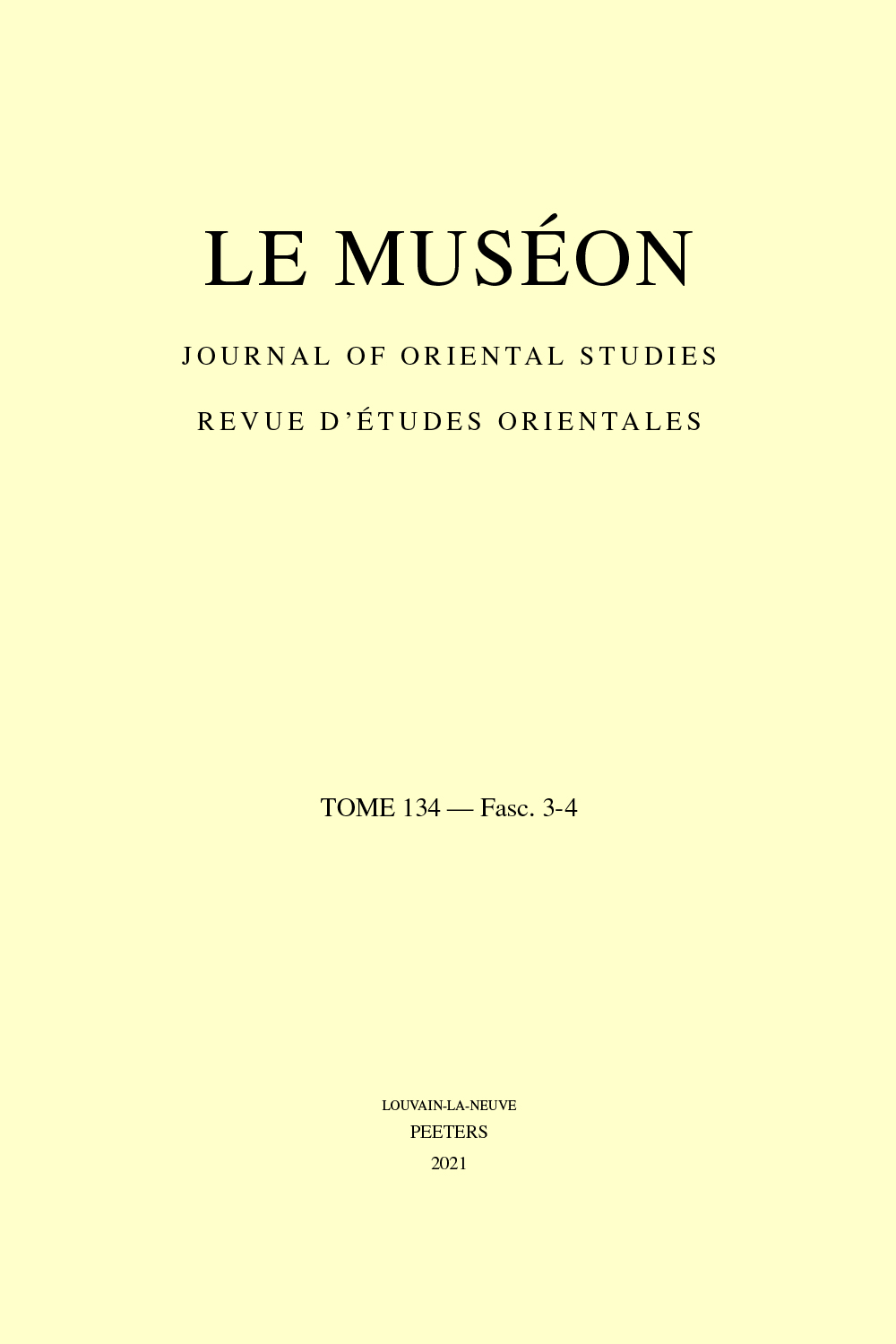 previous article in this issue previous article in this issue | next article in this issue  |

Preview first page |
Document Details : Title: A 17th-18th Century Manuscript in Spoken Egyptian Arabic Subtitle: Part Two: Linguistic Notes Author(s): PALVA, Heikki Journal: Le Muséon Volume: 121 Issue: 1-2 Date: 2008 Pages: 93-123 DOI: 10.2143/MUS.121.1.2120503 Abstract : The Ms. Firkovich Evr.-Arab. II 1536 published and discussed in this article is one of the most important documents of pre-19th century Spoken Egyptian Arabic. It belongs to the Second Firkovich Collection of Arabic and Hebrew manuscripts acquired by the Karaite scholar Abraham Firkovich (1787-1874), and preserved in the National Library of Russia in St. Petersburg. The provenance of the manuscript is undocumented, but it probably comes from the Old Karaite Synagogue in Cairo. It has been dated to the 17th or the 18th century. Although written in Hebrew characters, it is not an example of Judaeo-Arabic; rather, it is a representative sample of the language of narrative style used by storytellers in the cities of Lower Egypt in the seventeenth and eighteenth centuries. The 15 pages of the manuscript are in relatively good condition. The text is a folktale following the internationally well-known type “The Innocent Slandered Maiden,” written in plain, unrhymed prose and in Spoken Arabic. The influence of the Jewish Arabic mother tongue of the scribe seems to be restricted to a few phonetic peculiarities. It is most clearly noticeable in the orthography of sibilants and combinatory velarization or develarization of certain consonants. It is also obvious that the orthography reflects a dialect in which the reflex of jīm was affricated, but it remains an open question whether this feature has to be attributed to the Jewish Arabic dialect of the scribe or to the language form used by the narrator, which the text as a rule follows. One of the most interesting linguistic features of the text is the use of the imperfect forms in the 1st person. In the typologically significant division into aktib – niktib vs. niktib – niktibu dialects, the language of the text seems to represent the intermediate aktib – niktibu type, which among the Muslim and Christian population of Cairo in the 17th–18th centuries apparently was regarded as a conservative feature. On the other hand, the dialect of the Jewish population represented the more western niktib – niktibu type. The language of this text displays a stage at which the present-day relative tense system has not been fully developed. Thus, the historically older reflex of the Modern Cairo Arabic future marker ḥa- appears here as the active participle rāyiḥ, -a, -īn, marking both intention and future. Correspondingly, the functions of the b-imperfect still seem to be somewhat broader than in Cairo Arabic at the present. As far as the use of tenses and aspects in the narrative style is concerned, this text is exceptionally illustrative because several lengthy passages have been narrated twice. When a dramatic situation occurs for the first time, a form may be used which yields a markedly descriptive effect, but when the same passage is renarrated, the style is straightforward: 'ammāl + imperfect displaying progressivity of action is replaced by the less dramatic baqa + imperfect or the b-imperfect, and the descriptive imperative of narrative style is replaced by the perfect. |
|


